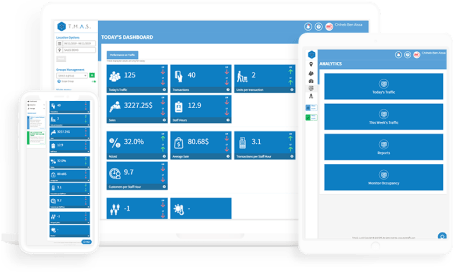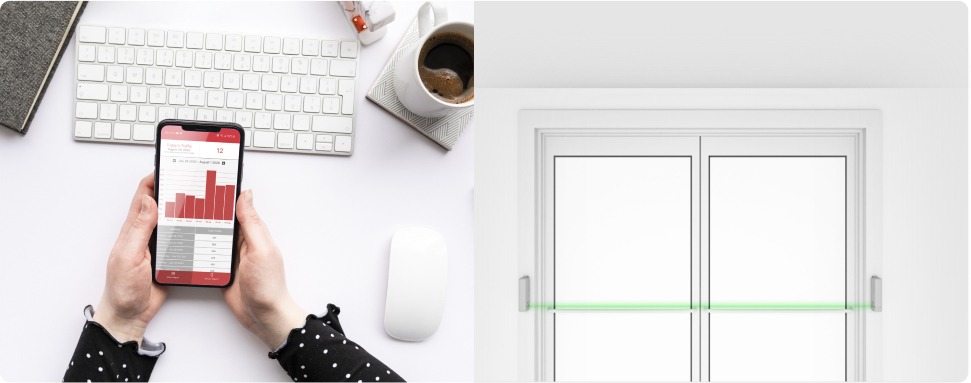|
Getting your Trinity Audio player ready...
|
Let’s be honest. How tired are you of hearing about the importance of experience in retail?
For the past decade or so, retailers were bombarded with the words customer experience. So much so that for many the term has lost its meaning. And that’s perfectly normal: our human brain is wired this way. It’s called semantic satiation—basically, repeat or hear about something too often, and your brain will simply shut it out.
Still, there’s no better time to hit the reset button in our minds regarding customer experience. With post-pandemic recovery underway and following a year’s worth of confinement and restrictive measures, customers are hungry for shopping, and it’s those stores that deliver on customer experience that will benefit the most.
How can you know how well you’re doing in terms of customer experience?
Is there a metric to assess your retail experience fitness score?
Well, actually, there sort of is!
In the following article:
1. The challenge with measuring retail customer experience
2. Ways to measure your customer experience
3. The most consistent customer experience metric
1. The challenge with measuring retail customer experience

Overusing the words may have undermined the concept, but the fact that customer experience remains something fairly intangible and hard to measure doesn’t help either.
The truth is you CAN’T MEASURE customer experience. Not directly, that is. What you CAN MEASURE are the metrics that depend on it. We’ll get to that in a minute.
We’ve mentioned this before—namely, in our article on customers’ emotions: customer experience is, first and foremost, a measure of your customers’ emotional reaction when visiting your store. Based on this notion, there are several ways to take the pulse of your customers.
2. Ways to measure your customer experience
Check-out counter service

Store exit surveys
Some retailers will have sales associates in the doorway asking customers aboaut their experience or inviting them to fill a survey online. The chances of stumbling upon a person who’s willing to take time—right then and there, or later at home—to answer questions correctly are pretty slim, however.
If you’re lucky, you can gather feedback that pinpoints specific areas for improvement. Still, it’s important to remember that everyone is feeling short on time. When a customer is exiting a store—whether they’ve made a purchase or not—they’re already focused on the next item on their to-do list.

Online store reviews
Remember: you’ve got an online footprint the moment your business is listed on Google—which also means you should be paying close attention to your online reviews!
Not only is monitoring online reviews important for damage control, but it can also be a good indicator of general customer satisfaction. Still, your online reviews don’t tell the whole story. Customer satisfaction levels will vary with time. Plus, some retailers will want to consider the acquisition cost of online reviews. For example: are positive reviews tied to marketing tactics or a business partnership, and what’s the real return on investment.
3. The most consistent customer experience metric
Remember how we wrote that you CAN’T MEASURE customer experience but that you CAN MEASURE the metrics that depend on it? Your conversion rate does precisely that. Your sales numbers are a key metric as well. But they only tell a part of your story, i.e. how much you sold. Your conversion rate paints a much broader picture.
See, this whole customer experience thing we’ve been talking about in the retail industry is very much a business strategy. It’s not about going that extra mile just for the sake of doing the right thing. Improving customer experience equates to investing in your business so that more customers end up buying.


4. Takeaways from your conversion rate

Your conversion rate and traffic are low: if this has been the case for some time, there are likely more significant problems at play than just customer experience, yet it may be a good place to start your analysis.
Your conversion rate is low, but your foot traffic is high: people are not finding what they are looking for, OR something is turning them down.
Your conversion rate is high, yet your foot traffic is low: you’re on to something. Your store visitors are appreciative of your products/services and the customer experience. Time to analyze and pinpoint the reasons for that, doubling down on what works and getting the word out.
Your conversion rate is high, and your traffic is high: you’ve reached retail nirvana! Just kidding. But things are looking good. Don’t rest on your laurels, however. Keep doing what you’re doing well, but keep an eye on your conversion rate metric, too: it’s your beacon.
5. Customer experience: a can’t-go-wrong approach
If you’ve got the basics right—i.e. location + products/services that are in demand—continued improvements to your store’s customer experience are sure to increase your conversion rate.
Whether you’re a current Storetraffic customer or not, our team is available to answer your questions regarding conversion rate, people counting technology and integrations with other platforms you may be using (e.g. POS). Hit the button below to schedule the moment that works best for you.













